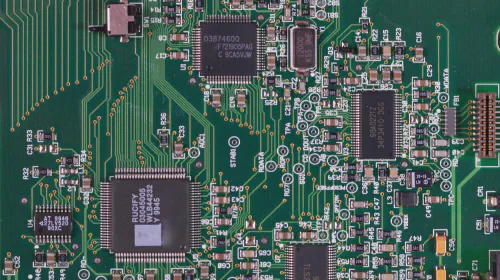Is Solana Dead? [2023]
Salomon Kisters
Jun 5, 2023This post may contain affiliate links. If you use these links to buy something we may earn a commission. Thanks!
Is Solana Dead? Every crypto investor’s mind has been pondering this question lately. With the ever-increasing market fluctuations, as well as the rise seen in other competitor cryptocurrencies, many have started to doubt Solana’s success and glory.
Are the days of Solana’s glory numbered? In this article, we will take a closer look at the challenges Solana has been facing and the possible outcomes, and explore the prospects for the blockchain.
Unraveling Solana: What is Solana, and How Does it Work?
Solana is a blockchain network that was created to house decentralized applications that can be scaled. The platform was built in 2017 as an open-source project. The Solana Foundation, based in Geneva, is overseeing the project, while Solana Labs in San Francisco designed the blockchain the platform runs on.
Solana is a layer-1 blockchain, and its architecture is designed to make it easier to create smart contracts and decentralized apps (DApps). The project is compatible with several DeFi systems and non-fungible token (NFT) marketplaces.
Speed and Scalability
Solana can process transactions at a much faster pace compared to other cryptocurrency platforms such as Bitcoin and Ethereum. Additionally, the cost of transactions is also considerably lower on Solana. The faster speeds of Solana are made possible with a hybrid consensus mechanism that combines the Proof-of-Stake and Proof of History mechanisms.
As a result, the Solana network may theoretically perform over 710,000 transactions per second (TPS) without requiring scaling solutions, compared with only 7 transactions per second capacity of the Bitcoin network.
This, however, results in a compromise on the platform’s decentralization. The scalability of a blockchain depends on the number of transactions it can handle per second. The greater the TPS, the higher the chances for the blockchain to scale up. With decentralized blockchains, the larger output and more nodes verifying the transactions can slow down this process.
Solana addresses this issue by appointing a leader node. This selection is based on the PoS system that sequences the messages between the nodes. This, in turn, decreases the workload while increasing the yield even without a centralized source.
Proof of History (PoH)
The Solana network also creates a transaction chain by hashing the previous transaction’s output to use it as the input for the next one. The record of these transactions serves as the primary consensus mechanism of Solana, i.e. the Proof of History consensus mechanism.
PoH, therefore, serves as an integral aspect of the protocol of Solana. It acts as a sequential virtual record that confirms when anything has occurred on the network at any point in time. The PoH mechanism depends on PoS using the tower BFT algorithm. The algorithm, thus, makes the network more stable and can also act as an alternative method to validate the transactions.
In publicly available blockchains, each node in the network is only aware of its local clock but has no knowledge of the clocks of other network members. The absence of a reliable source of time means that when a message timestamp is used to accept or reject a transaction, there is no guarantee that every other member in the network would make the same decision.
PoH solves this problem by allowing every node in the network to rely on the ledger’s recorded passage of time to provide the trustless basis essential for blockchain to function. Solana validators may use the sequence of hashes to record a specific piece of data produced before the production of a hash index.
The transaction timestamp is generated once this specific piece of data is entered. To achieve faster transaction rates, all network nodes must have cryptographic clocks to keep track of events rather than waiting for other validators to validate transactions.
The SOL Token
The native currency of Solana is the SOL token. It is used to trade on the platform and provide blockchain security. After Solana was introduced in March 2020, 511 million coins were released in the market. Approximately 60% of the circulating coins are under the control of the Solana Foundation, with 38% made available to the users.
The Sol token operates on a system similar to that of the Ethereum network. Even with the networks’ comparability, Solana users have to stake the token for transaction validation with the help of the PoS consensus mechanism. The token can also be used for receiving rewards as well as the payment of any transaction fees.
What Went Wrong and Where? The Causes of Decline
So what has happened with Solana? According to CNBC, since the start of 2022, Solana’s value has decreased by more than $50 billion, a decline of 30% in its value. The most apparent reason is the drastic shifts the cryptocurrency landscape has undergone lately.
With nearly a decade of low-level interest rates and an uninterrupted cash flow, the Federal Reserve has retracted all support. Due to this action, even with its short history, Bitcoin has to contend with a bear market trend in the larger economy.
Let’s explore the key factors leading to the decline of Solana.
Persistent System Downtime
The first issue is the system’s relentless outages due to the increasing amount of traffic. Solana entered the market with the shiny promises of breakneck transaction speeds and small gas fees, so it experienced an influx of seed capital and a rapid rise in investor interest.
With this accelerated expansion of the risk assets, a lack of proper oversight and necessary analysis led to systemic problems with the Solana system and as a result, the outages not only persisted but became even more frequent.
The ongoing disruptions at Solana caused by increased traffic have gotten worse due to a lack of supervision.
Projects Abandoning Solana
The relocation of projects from Solana to competing crypto platforms is a significant concern. By the end of last year, leading NFT collections y00ts and DeGods made announcements regarding their move from Solana to Polygon and Ethereum, respectively. This significantly harmed the blockchain’s reputation in the cryptocurrency marketplace.
Endorsement by Sam Bankman-Fried
Bankman-Fried was Solana’s most enthusiastic supporter. The disgraced founder of FTX was an early backer of Solana, with the token even showing on FTX’s very public balance sheet as the business desperately sought investors at the last minute. Many today feel Bankman-Fried’s activities led to SOL’s vertical rise throughout the pandemic.
Solana has struggled much more than other cryptos in the aftermath of FTX’s demise. Given what transpired behind closed doors at FTX, investors are concerned that part of Bankman-Fried’s backing for SOL was obtained through fraudulent activities. Thus, Solana’s chances at success have been slimmed just by its affiliation with the suspected fraudster.
Competition
Another reason for Solana’s decline is stiff competition from newer and more favorable crypto initiatives. Bitgert (BRISE) is a major Solana rival.
It is now performing very well in the sector, with data revealing that the Bitgert coin has been surging while other coins like Solana have been plummeting. As the team created and launched the fastest blockchain in the industry, it quickly became clear that Bitgert posed as Solana’s most formidable rival.
Bitgert is also the first blockchain to outperform Solana in the speed department. It enjoys lower transaction costs in comparison to Solana. This undercuts the factors that once made Solana unique and so successful. Other major competitors include Ethereum, Cardano, and Polkadot.
Recovery and Future Prospects
Like any blockchain project, Solana is not immune to challenges and obstacles. One has to think about whether the problems Solana is currently experiencing are long-lasting or fixable.
The higher TPS rate of Solana and lower fees can still play a positive role in gaining back traction. Still, it comes at the cost of security and stability of the network, and many users have been raising concerns about this issue.
The whole crypto market is in distress as the absence of zero-interest fees from the Federal Reserve comes into effect, and the peaking interest of the pandemic finally dies down. With the consistent inflationary pressures and uncertainty seen in the larger financial sector, things aren’t expected to improve anytime soon.
Looking ahead, the present bull market tendency in the cryptocurrency space will undoubtedly assist the Solana ecosystem. According to technical analysts, the currency will soon break above the $30 barrier and may reach new highs.
Despite Solana’s short-term decline, there is still hope for its long-term prospects. SOL has solid underpinnings, with a flourishing network of users and developers actively supporting it. Similarly, exchange liquidity has progressively increased, suggesting high investor confidence.
Conclusion
It is expected that Solana will continue to face challenges and potential obstacles as it seeks to maintain its position as a leading blockchain project. Now that we have gone over what Solana is, how it works, and all the challenges it faces, we hope that you now have a better idea of its possible future.
As with any cryptocurrency, the value of SOL and the success of the Solana project are subject to market fluctuations and volatility. This means that the value of SOL may rise or fall based on market conditions and investor sentiment.
There is a strong possibility that all the issues that the blockchain is facing, including overload, competition, and negative exposure, will be resolved. The cryptocurrency industry is full of surprises, so 2023 might prove that we were right to forecast that SOL will grow despite the FTX scandal.
Stay informed with the latest insights in Crypto, Blockchain, and Cyber-Security! Subscribe to our newsletter now to receive exclusive updates, expert analyses, and current developments directly to your inbox. Don't miss the opportunity to expand your knowledge and stay up-to-date.
Love what you're reading? Subscribe for top stories in Crypto, Blockchain, and Cyber-Security. Stay informed with exclusive updates.
Please note that the Content may have been generated with the Help of AI. The editorial content of OriginStamp AG does not constitute a recommendation for investment or purchase advice. In principle, an investment can also lead to a total loss. Therefore, please seek advice before making an investment decision.

What is Solana, and What are Its Use Cases?
Solana is a modern blockchain that differs significantly from the Bitcoin network. This post will discuss Solana and its use cases.

Does Solana Solve the Blockchain Trilemma?
Solana is a blockchain platform that seeks to solve the blockchain trilemma. Does Solana offer a workable solution?

Ethereum vs. Solana - What's the Difference?
This article will compare different aspects of Ethereum and Solana to highlight the differences and similarities between both projects.
Protect your documents
Your gateway to unforgeable data. Imprint the authenticity of your information with our blockchain timestamp